Lessons to Learn From Men’s Brands That Broke Out
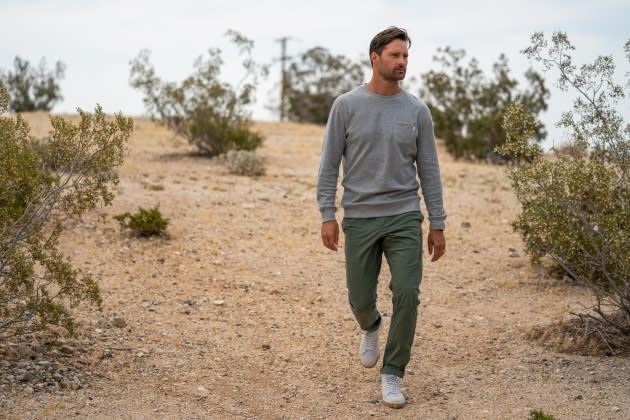
Flash and crash.
Sadly, that’s what often happens to some of the most promising fashion brands as they attempt to grow from a buzzworthy newcomer into a commercially successful company.
More from WWD
In menswear, the road is littered with names that had a few years of success before falling into fashion’s black hole. Remember Ovadia & Sons, Orley, Duckie Brown, Patrik Ervell, Robert Geller, Victor Li, Linder, Scott Sternberg and Tim Coppens?
While some of the brands still exist, or their designers have moved on to work for other companies, there’s no doubt their star power has faded. Most of the time, it’s not for lack of talent. Rather, their problems can be blamed on everything from inadequate funding or production snafus to inexperienced management.
But there are brands that have managed to break that cycle and build highly profitable businesses. In menswear, some of the most impressive include Vuori, Psycho Bunny, Faherty, Johnnie-O and Bombas. Although they service different parts of the market — everything from socks and activewear to polos and beachy button-downs — they have managed to navigate through the potential pitfalls to build multimillion-dollar businesses.
Here, the top executives of these breakout brands outline the paths they took and the lessons learned along the way.
Bombas
Bombas is a brand on a mission.
Since its founding by David Heath and Randy Goldberg 10 years ago, the men’s basics brand has had one goal: to create a profitable business with a philanthropic bent. Neither had an apparel industry background but they met when they worked at Urban Daddy, bonded over the idea of entrepreneurship and started talking about teaming up on a business. Although socks, their launch product, were not initially part of the conversation, that changed when they saw a post on Facebook saying socks were the most requested item at homeless shelters. So they created Bombas, the Latin word for bumblebee, a business whose motto is “bee better,” a mantra that is heat-sealed on every product. Their promise from day one has been that for every item purchased, one would be donated to the less fortunate.
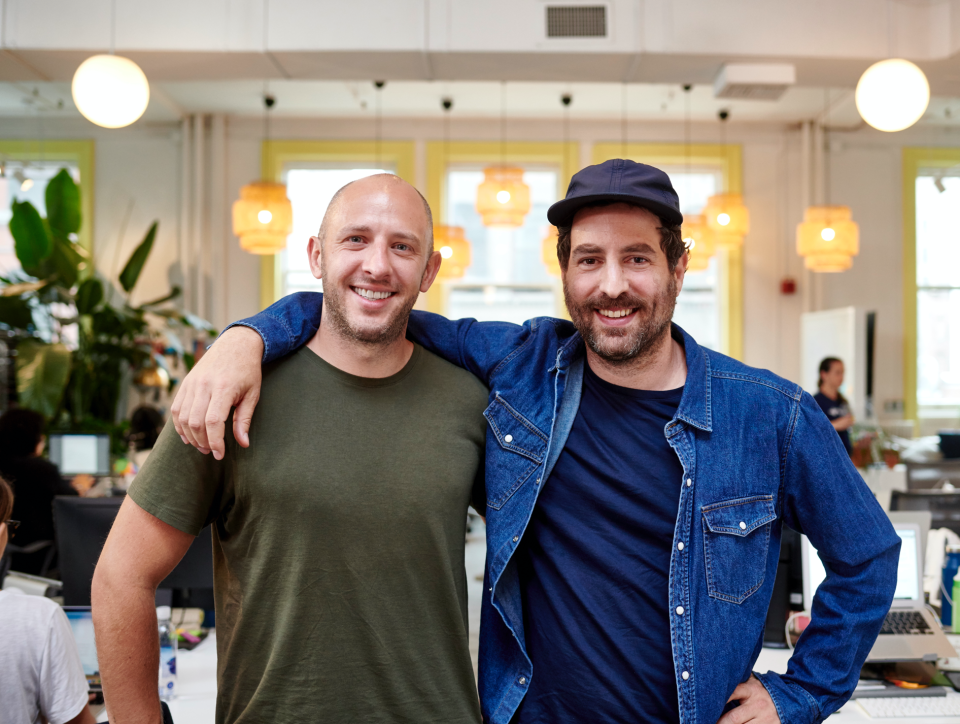
That idea won over Daymond John, the founder of Fubu, who invested $200,000 to buy a minority stake in the brand after Heath and Goldberg appeared on “Shark Tank” in 2014. Today, Bombas has sales in excess of $300 million and has donated more than 100 million items to more than 3,500 organizations around the country. Although it sold only socks for the first eight years, it has now expanded into underwear, T-shirts and slippers for both men and women.
“Our business is grounded in two main ideas,” Goldberg said. “We started this company to give back to the communities where we all work and live. And we also said that we were going to reinvent a product that was an afterthought in the marketplace. We built a philosophy around designing products really focused on the little things that add up to make a big difference. That has been the unwavering bedrock of this company for 10 years.”
But they acknowledged that not everything they tried over the past decade was a success. A move into sweatshirts and sweatpants in 2017 failed, so after one season, they regrouped and refocused on socks, which still represent 90 percent of sales.
“That was outside our comfort zone and in the lead-up to the launch, we realized it was a mistake,” Heath said. “But we self-corrected very quickly. It was all part of the learning process.”
Once they sold through the inventory, they looked for other categories that made more sense for Bombas and settled on T-shirts, the third most requested item in homeless shelters, and launched that in 2019, followed by underwear, the second most requested item, in 2020.
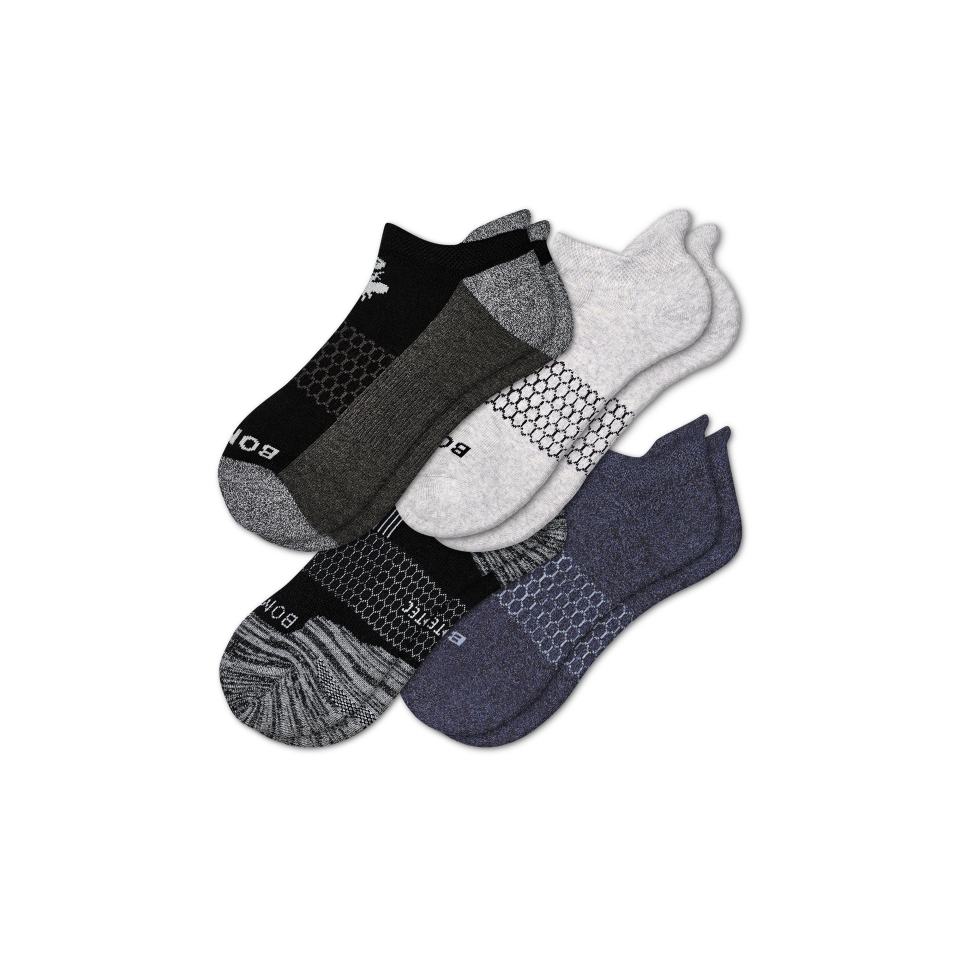
“We didn’t want to be just another sock company. But you have to earn the right to do more,” Goldberg said.
But just wanting to expand is not enough; it takes capital and commitment. Bombas launched on the crowdfunded site Indiegogo and managed to bring in $150,000 in sales in the first month. The company used that money to launch a website and within six months was bringing in $500,000 in sales.
“We went out to raise capital and talked to all the VCs [venture capitalists] who were investing in consumer brands at the time and everybody passed because we were like a sock company and it wasn’t interesting,” Heath recalled. “Luckily, we had a number of angel investors who believed in our vision and ended up raising $1 million of seed funding in our first year. That was the same year we got cast and recruited to be on ‘Shark Tank’ and within two months of airing, we sold over $1 million of inventory, basically doubling the business in two months.”
In the second year, sales hit $5 million but then another problem arose. “We kept running out of stock,” Heath said. “We couldn’t keep up with the demand. So we went out to raise more capital. All of our early angel investors reinvested and brought in a bunch of their friends and we closed another $3 million of funding. So $4 million total, with no institutional investors, and for the rest of the life of the business, we basically grew off of the cash flow that we generated.”
It was in the fifth year that the private equity firms came knocking, and as a way to pay off its early investors and reward its employees, Bombas sold a significant stake in the business to Great Hill Partners and has since added Irving Investors, Vanterra Capital and Third Point Ventures. Although there was rumbling that the company was looking into going public, the founders said that’s not on the table for now.
“As we look back on the last 10 years, a lot of businesses are celebrated for how much capital they were raising, and their valuations,” Heath said. “But that was never important to us. We’re proud of building a business that is self-sustainable and profitable.”
Today, only 7 percent of sales come from wholesale, notably Nordstrom and Dick’s Sporting Goods, but their reach means the brand is carried in more than 1,400 retail locations around the U.S., so that’s a potential avenue for growth, along with growing market share in their current categories.
“Socks in the U.S. is a $24 billion industry,” Heath said. “Based off of our last fiscal year’s numbers, we’re just over 1 percent of the penetration in that category. And the basics business is $110 billion, so we really haven’t even scratched the surface.”
Growing awareness is key, they believe, and in honor of its 100 millionth donation, the company launched a new advertising campaign called Compassion = Change online and around the U.S., encouraging people to think differently about homelessness by highlighting facts and stories about the issue.
“It’s a copy-based campaign, there’s no product, very little branding,” Goldberg said. “We’re in a really interesting moment in the country around the issue of homelessness, but I don’t think people are thinking about those who are experiencing homelessness. We have had 10 years of experience of interacting with the homeless community and building friendships there. And we want to share some of those stories.”
Faherty
At its heart, Faherty is a family business.
Ten years ago, twin brothers Alex and Mike Faherty, who grew up surfing on the New Jersey shore, ditched their day jobs to create a sustainably sourced East Coast-skewed men’s sportswear collection with a muted color palette that would offer an alternative to the brightly colored California surf brands.
Mike Faherty, who majored in fashion design at Washington University in St. Louis and worked for Ralph Lauren before starting the company, serves as chief creative officer, while Alex, a Yale grad who has a background in finance, is chief executive officer. Kerry Docherty, Alex’s wife and a one-time human rights lawyer, is chief impact officer, and their mother, Ninie Norris, is vice president of store design.
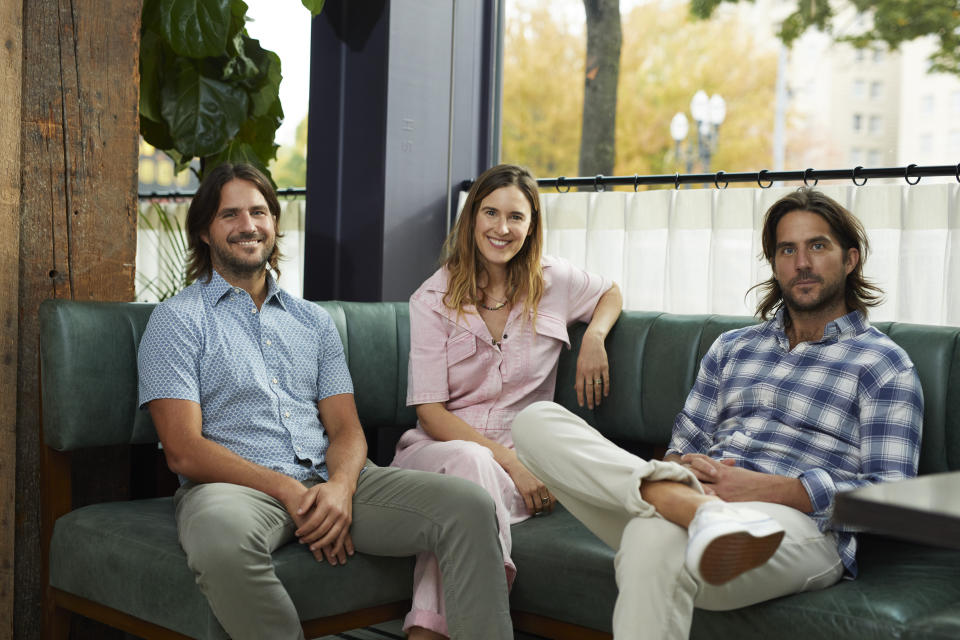
The brand launched with a pair of men’s board shorts in 2013 — a piece that is now being offered in 10 colors and three inseam lengths. It has since expanded into womenswear, kids’ and home products. Women’s now represents around 30 percent of the overall business and kids’ 5 percent.
Faherty also has a big brick-and-mortar presence, operating 52 stores around the U.S. with locations on the East and West Coasts in resort communities such as Martha’s Vineyard, Massachusetts; Newport Beach and Malibu, California, and Spring Lake, New Jersey, as well as popular metro areas such as Greenwich Village in New York City and the Seaport in Boston. It recently entered the fray on Madison Avenue as well with a 3,864-square-foot store on the luxury street.
But while the company has grown to have annual volume of more than $200 million, “this is an old-school family brand,” Alex Faherty stressed. “There’s a lot of human capital here.”
Over the past decade, the message has remained consistent. As Alex Faherty described it: “Our brand has always been about things we like: the beach, the outdoors.”
In addition to its signature board short, Faherty now offers shorts, casual shirts, swimwear, hoodies, sweaters and blazers for men; dresses, skirts, cover-ups and loungewear for women; and rompers, jumpsuits and coveralls for children. There are also accessories such as hats, belts, sunglasses, socks, shoes, wallets and duffles, as well as blankets and dog beds.

Throughout the assortment, the company seeks to reduce environmental harm by using recyclable packaging and recycled or responsibly sourced materials wherever possible. It recently launched a resale program called “Second Wave,” where customers can buy and sell previously owned Faherty apparel through a peer-to-peer marketplace destination, and repaired and renewed goods can be listed alongside brand-owned inventory.
In addition, the brand works with Indigenous people and offers a collection designed by Native American designers and artists.
During the height of the pandemic, when other brands were hunkering down, Faherty set out to vastly increase its retail presence. “When COVID[-19] hit,” Alex Faherty said, “we had 14 stores, but we saw the opportunity to expand, and we took it.”
He admitted that managing a retail business presents a lot of challenges in terms of staffing and operations, and while the company is committed to continuing to grow its brick-and-mortar presence, “retail doesn’t always love you back,” he said with a chuckle.
But the company has grown five-fold since COVID-19, he said, driven by the popularity of its casually skewed assortment. Before the pandemic, men only bought suits or activewear, but now they’re embracing the comfortable fabrics and “rugged casual vibe” that Faherty has become known for, he said.
As people started to return to the office, the company broadened the scope of its offering to add some more tailored pieces — a category he said has become “a meaningful part of the business. We try to stay in lock-step with consumer needs.”
In addition to its own stores, Faherty has a strong online presence and sells wholesale. “Each channel has its own complexity and challenges to navigate,” he said. “But it helps us to manage the seasonality and risks of the business.”
Although Faherty continues to grow, there have been challenges along the way. “We’ve always been product first,” he said, “but as a small brand, sometimes it’s hard to get things made. So our product team is where the majority of our investment goes. It’s a big help, though, to have a brother that worked for Ralph Lauren.”
Setting a plan can also be tough, he said, especially in the beginning. “How do you anticipate demand and forecast sales when a brand is growing like a weed?”
Over the past decade, Faherty relied mainly on “angel capital” from friends and family as well as some early funding from Hilldun Corp. “Working capital ebbs and flows, but we never had a lot of money,” he said. Last year, it received some financing from J.P. Morgan as well.
While the company has accepted some outside financing, Alex Faherty said the family is still very much in control. “There are 200 people in our headquarters and in our retail fleet, but our name is still on it and we still run the business,” he said. “And we still drive the strategy of where we’re going.”
He said Faherty retains the “ethos of a family brand, but we’ve built a great leadership team that can scale with us.”
He pointed to brands such as Brunello Cucinelli, Ralph Lauren, Nike and Patagonia as companies he respects and would like to emulate. “Brunello has done an awesome job building a global powerhouse, Ralph created his own world, Nike is amazing and continues to stand the test of time, and Patagonia is inspiring to any brand trying to make a difference.”
So what’s next for Faherty?
Eventually, the family hopes to expand internationally as well as into other categories such as hospitality. “There are a lot of fun things we can do with the brand,” he said.
Johnnie-O
It wasn’t until college that John O’Donnell really embraced the coastal lifestyle. The founder of Johnnie-O grew up in a conservative household in suburban Chicago surrounded by the preppie country club culture, where he spent his teenage years perfecting his golf game. He put that skill to use at UCLA, where he majored in history and business and played on the golf team. As a top-ranked amateur who had the opportunity to play in five USGA events, he flirted with the idea of turning pro after graduation. Instead, his path led him to advertising sales at Fox Sports Net Chicago, followed by Golf Channel and Merrill Corp., a financial printing firm.
But it didn’t take long for him to tire of the corporate lifestyle and O’Donnell came up with an idea to create a line of menswear centered around what he called “West Coast prep,” an idea rooted in years of blue blazers, penny loafers and khaki pants coupled with flip-flops, board shorts and graphic T-shirts, as O’Donnell describes it on his website.
First, O’Donnell, the brother of actor Chris O’Donnell of “NCIS Los Angeles” fame, created a logo of a guy standing on the beach holding a surfboard, or what he describes as “the West Coast version of a horse or a whale.” Next, he stuck the logo on a polo in a traditional silhouette created from a washed, Old School cotton fabric, named it after his nickname, Johnnie-O, and a brand was born.
That was 2005. Fast forward to today and that little surfer dude emblazons a full lifestyle collection of men’s and boyswear — everything from golf and swimwear to hoodies and sport coats — with annual sales of nearly $200 million.
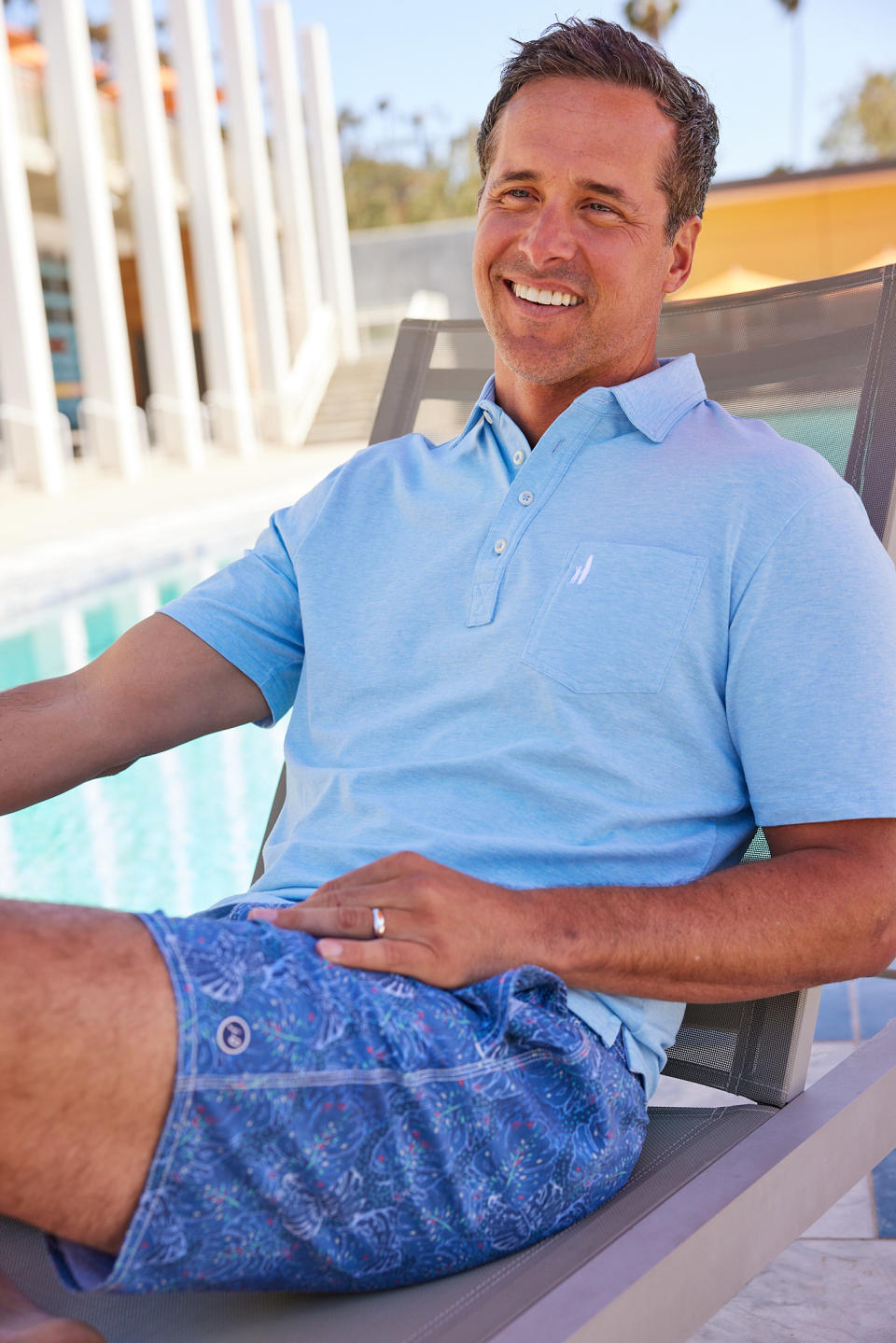
Last April Johnnie-O took on its first institutional investors when Ares Management Corp. and Wasatch Global Investors purchased a minority stake for $108 million. It marked the sixth time the brand raised funding, but the earlier rounds came from family and friends.
Although O’Donnell continues to be involved in the business, it has been run on a day-to-day basis since 2015 by Dave Gatto, a one-time president and chief executive officer of Reef Holdings, where he spearheaded the sale of the surf sandals and apparel brand to VF Corp. and later led that company’s outdoor coalition.
Looking back at Johnnie-O’s success over the past 18 years, Gatto said, “There’s no secret recipe, there’s no silver bullet, there’s no kind of easy path. It’s definitely a lot of execution across a lot of things. It certainly starts with product and ends with product, but there are about 10 things in between that are all critical to being able to create a brand and a business in a way that is sustainable for a long period of time.”
He likened building a brand to a nightclub that has a particular type of music, food, beverage and audience. “I think about the brand in that way: we’re attracting individuals to be part of our club and if they like it, they’ll come back. A brand is a living organism — it’s more than just a logo or a name or an ad here or there; it’s a lifestyle.”
After that, a successful company also has to create a culture, which he defined as “what people do when no one else is looking. Sure, there are dog-friendly offices and ping-pong tables and free lunch, but do they go that extra mile? Are they taking care of the customer? Are they trying to find a better solution for something in front of them? That’s what culture is and it has to reinforce what you’re trying to stand for in the brand, and ultimately present itself in what consumers see and digest and know about you.”
Businesses also need to execute properly, Gatto believes. “I think 90 percent of strategy is execution,” he said. “Decisions that are made every day, every week, every month, over the course of years.”
Where a product is sold, whether it’s a company’s own stores or through wholesale partners, needs to be carefully considered because “every one of those decisions makes a big difference and adds up. It’s not just the season or the year, it’s for the life of the business.”
This means getting to know the consumer and how he wants to shop. “Some businesses might have a great product,” he said, so they opt for cutting out the middleman and going direct to consumer. “But if your consumer isn’t wanting to interact in buying your products in that way, then it becomes a really slippery slope,” he said.
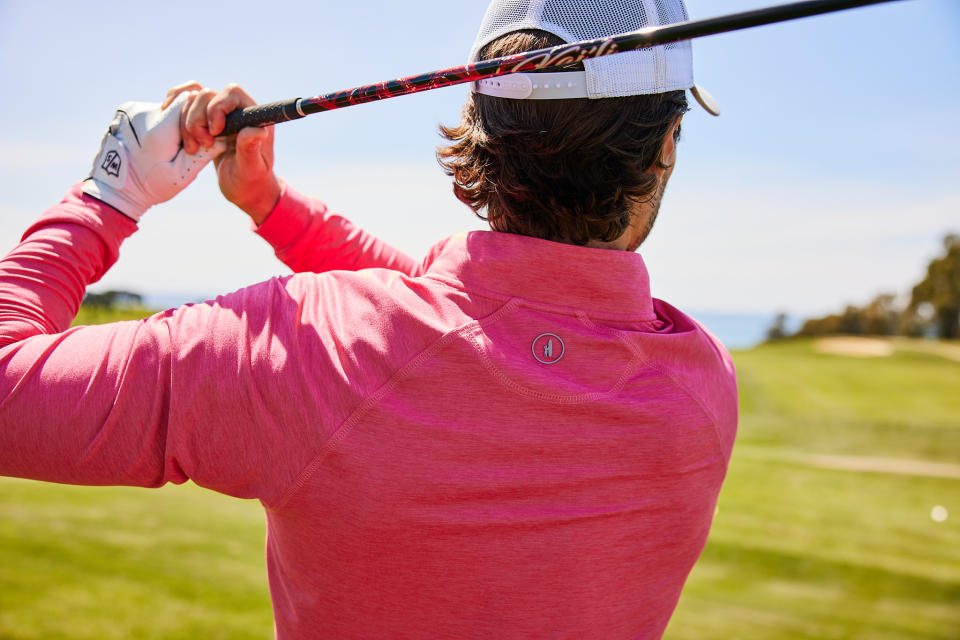
In the case of Johnnie-O, he said two-thirds of its distribution is through wholesale channels, which Gatto said is intentional “with a mind toward our end consumer and how he or his significant other wants to discover and buy the brand.”
In partnership with its retail customers, the brand sticks to a promotional cadence of only going on sale twice a year, and only on products that aren’t carrying forward, he said. This helps to control inventory, which Gatto called “the silent killer” that can “derail” an emerging brand.
“For us, our approach has always been steady growth as opposed to trying to grow as big and as fast as you can,” he said. “I’d rather sell a few less items than have too much inventory. It’s a discipline that has to be adhered to every season, year in and year out.”
He credited O’Donnell with having a long-term vision as he set out to build something he envisioned could be “the next great iconic American brand. Our products are on trend, but they’re not trendy. They’re fashionable, but not faddish, they’re multioccasional, and our consumer who discovers the brand in their 20s and 30s will be wearing it in their 30s, 40s, 50s and 60s.”
Looking to the future, Gatto believes there is still a lot of growth in its existing channels as it builds greater brand awareness across the U.S. The company has a handful of Johnnie-O retail stores, but they are operated by wholesale partners who are experts in the particular cities in which the stores are located.
Those stores, as well as the brand in general, will benefit from the work of Norma Delaney, who joined the company at the end of last year as chief marketing officer. She said the goal is to expand the brand’s reach by developing creative direct mail and online campaigns that can “amplify” the company’s message.
For now, that message will stay focused on the American market. “Another mistake folks might make is to underestimate the amount of work and effort it takes to be successful in other markets,” Gatto said. “There’s a massive opportunity for us when we turn our attention to that, but we’ve still got so much work to do here in the U.S.”
Psycho Bunny
A buck-toothed bunny with pink ears positioned over a set of crossbones isn’t exactly a polo pony or an alligator, but that irreverent and slightly maniacal-looking logo has managed to carve out a niche in the men’s market over the past 18 years.
The initial idea for Psycho Bunny started in 2005 with Robert Godley, a U.K. native whose apparel industry background included Drake’s of London and Turnbull & Asser. He stuck the logo on some ties and after a buyer commented that the logo looked like a psycho bunny, the name stuck. He soon partnered with Robert Goldman, an apparel industry veteran whose family had a neckwear manufacturing business, and together they set out to build a brand.
Initially, it was neckwear only, but they soon turned their attention to creating a better polo shirt. That shirt was made from 100 percent pima cotton with taped seams, side vents, mother-of-pearl buttons and the Psycho Bunny logo and it quickly made its mark, getting picked up by specialty stores as well as larger retailers such as Nordstrom, Bloomingdale’s and Dillard’s.
As sales rose so did the number of categories offered until that rabbit logo adorned everything from golfwear and outerwear to tailored clothing.
But around 2013, things began to unravel and Psycho Bunny experienced operational issues and internal struggles.
Enter Alen Brandman to the rescue.

Brandman is the chief executive officer of Thread Collective, a successful Montreal-based business that started out as a children’s denim manufacturer but now produces apparel under license for a large number of brands including Bebe, Hurley, Kenneth Cole, Ellen Tracy, Badgley Mischka and Pajar. He was also the outerwear licensee for Psycho Bunny and attended Harvard Business School, so he offered his services to save the brand.
He took over control of all production in 2016, purchased 100 percent of the operating rights and 50 percent of the intellectual property rights of the brand and became the third equity partner alongside Godley and Goldman. In 2021, he acquired full ownership when Godley and Goldman exited the business. In 2022, Brandman brought private investment firm BBRC, led by Australian retail executive and billionaire Brett Blundy and Bertrand Cesvet, respectively the former CEO and chairman of Sid Lee, a commercial creativity firm, on board as a minority partner.
Today, Psycho Bunny offers T-shirts, sweatshirts, hoodies, jackets, pants, shorts, swimwear and boyswear as well as a wide variety of accessories. There are more than 70 stores around North America and last year, he launched an elevated subbrand named Outline.
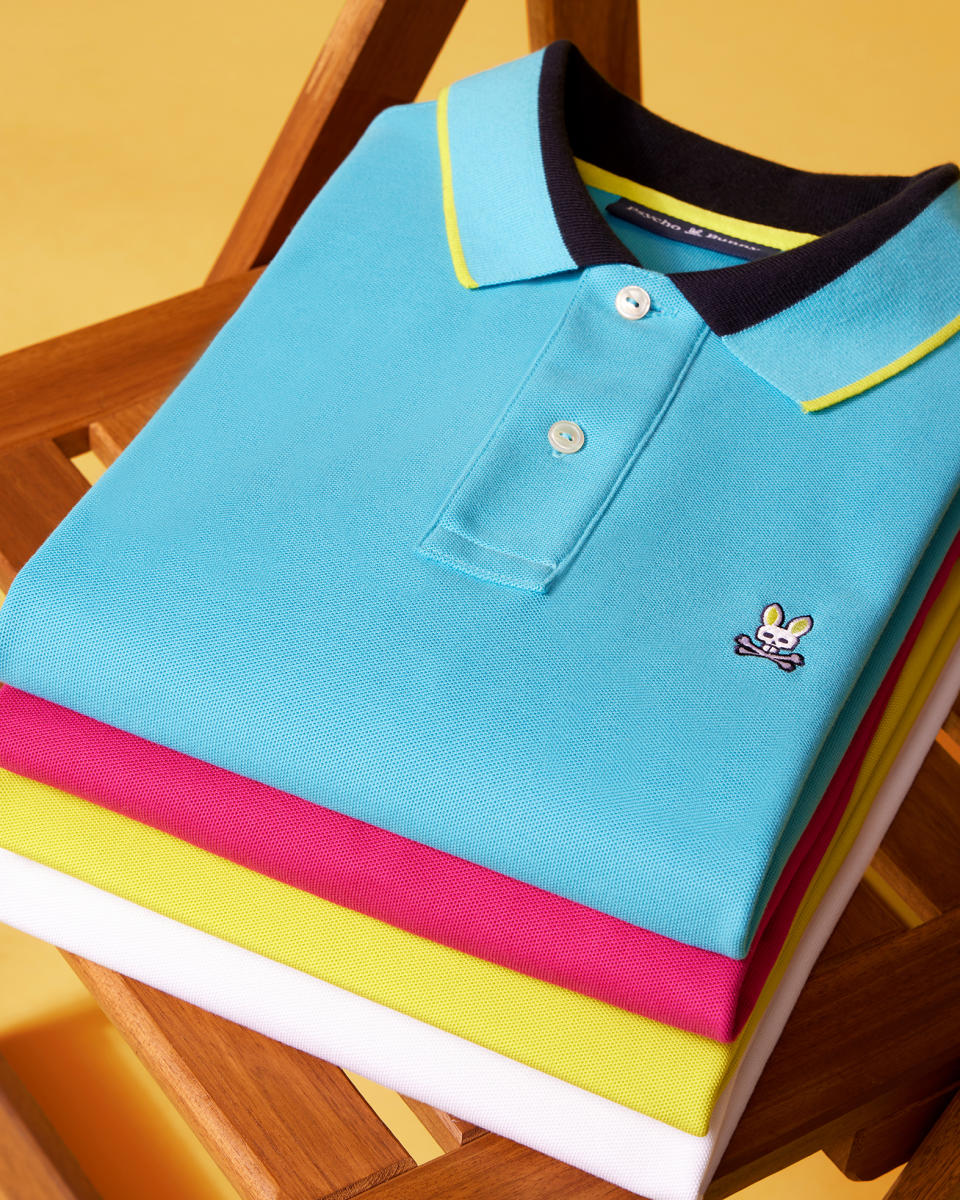
“I had a broader vision of what Psycho Bunny could be,” Brandman said. “I saw the beginnings of something that could be beautiful. We were armed with a full team of production people, a full team of graphic artists and I was able to leverage the skills and talents that we brought to the table. I saw that as a major opportunity.”
Above and beyond the back end, for Brandman the success of Psycho Bunny comes down to product.
“Inevitably, every business needs money to run,” he said. “But I think it’s the least important factor in terms of a fashion business — or any business for that matter. Because as we’ve seen in the world, there is far more money than there are good ideas.”
In the case of Psycho Bunny, Brandman said before any product is created, the team asks some fundamental questions: Does it work for the consumer? What’s our point of view? How are we going to give it a different feeling? “The last thing you want to do is rush to market,” he said. “We want to make consistently great stuff that is fairly priced and a great experience for the consumer.”
The formula is simple on paper, but as evidenced by the number of failures in the apparel industry, not that easy to master.
“We need to be logistically good, we need to be on time, we need to replenish properly, we need to do all the things that are extremely important in an apparel business,” he said. “But most important, we need great product for the price points that we were selling in.
“It’s pretty simple. Let’s just make great stuff that people love and then they’ll buy more of it.”
The consumer is savvy, he believes, and a successful company must never take advantage of the trust a shopper puts into a brand. “This is a long game,” he said. “Men especially are strange creatures. Some men have the same type of underwear for 12 years. Some men have the same T-shirt for 10 years, so you need to make sure those core fundamentals are treated with great respect to ensure people are going to come back. And we’re not going to do anything to breach that trust.”
Because the company is private, Brandman doesn’t have the pressure of having to answer to shareholders every quarter, so he can take his time and get it right.
“On our whiteboard is the word ‘longevity,’” he said. “My favorite athlete is Rafael Nadal. I find his humility and his effort beautiful. But if you don’t make that effort every day, you’re never going to be able to compete at the highest level.”
He pointed to designers such as Giorgio Armani and Brunello Cucinelli as others he looks up to because of the businesses they’ve created around classic products.
“Our polo is timeless. It keeps going for a very long period of time. And I take a great deal of pride in that.”
Going forward, Brandman said he will continue to add stores as well as product categories.
By the end of this year, Psycho Bunny will have 80 stores and the goal is to add a few more in key locations around the U.S. “We don’t have an ambition to turn it into 300 stores,” he said. “Maybe we’ll add five more, but that’s it. The next place I want to go is Europe. We’re currently selling in Spain and the U.K., but I want to expand our European presence,” he said. “But we want to do it quietly and humbly. If you don’t have humility, you’re dead. And if you aren’t humble, you’ll never figure out how to get better.”
Vuori
It all started with a pain in the back.
After years playing football and lacrosse, Joe Kudla developed chronic back pain and to treat it, took up yoga. Although he quickly became a fan of the discipline, he didn’t like the apparel options offered to him by Lululemon, Nike, Adidas or other brands and set out to create an alternative.
The California native and one-time model had worked as a senior auditor with Ernst & Young but also had a background in entrepreneurship — he founded Vaco, a professional staffing company that was among San Diego’s fastest growing companies during his tenure. So he wasn’t afraid to try his hand at fashion and in 2015 developed workout shorts that could take a guy from the gym to lunch. He raised $300,000 from friends and family and created moisture-wicking, quick-drying shorts with a distinctly coastal California aesthetic. He named the brand Vuori after the Finnish word for mountain to represent the clarity one gets after a trip to the summit.
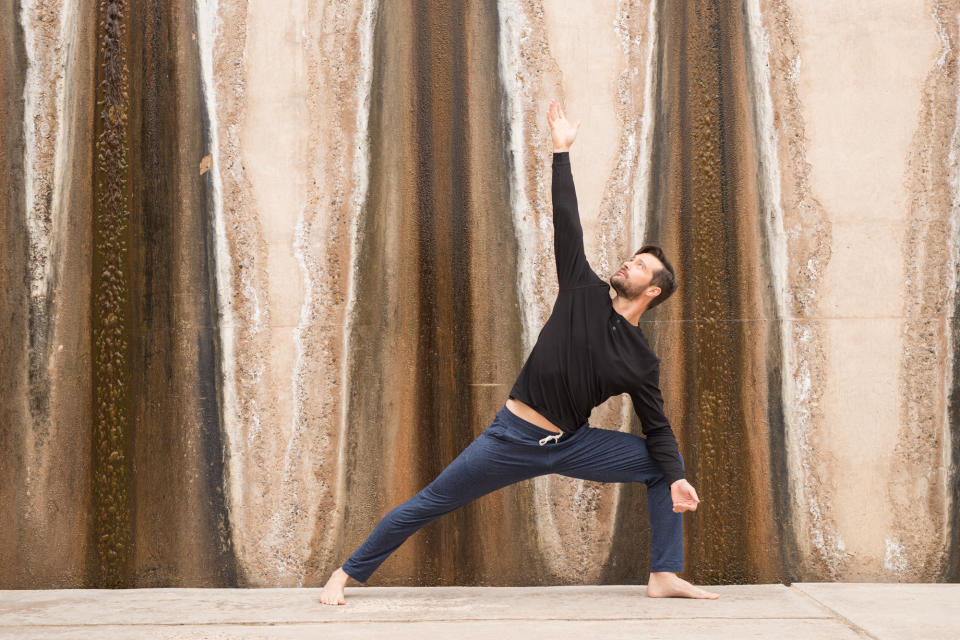
Since then the brand has expanded into an assortment of other categories including pants, polos, button-down shirts, outerwear, swimwear and a travel collection. In 2018, the brand made the move into womenswear, offering many of the same categories with the same aesthetic. Women’s now represents half of all sales.
In 2019, Norwest Venture Partners wrote a check for $45 million to the company for a minority stake and former Neiman Marcus executive Jim Gold also became an investor, predicting at the time that Vuori could be a $1 billion brand. People snickered, but not for long because two years later, SoftBank Vision invested $400 million into the company, bringing its valuation to $4 billion.
Since then Vuori has developed a robust wholesale business along with an aggressive brick-and-mortar strategy with 30 stores open now and a goal to have 100 within five years.

Last year it made the jump outside the U.S. to the U.K., France, Germany, Ireland, Netherlands, Australia and Canada.
But for Kudla, Vuori’s red-hot trajectory boils down to a pretty simple strategy. “In a consumer retail brand, everything comes down to product and storytelling,” he said. “I think what made Vuori successful was that we were a bit of a cultural innovator. The landscape of activewear was really dominated by a certain archetype: it was all about moisture wicking, the technical properties of a garment, and leveraging the best athletes in the world wearing the product to try to convince the customer that if you bought this short, you too could perform like this name-brand athlete. But Vuori came in with a new perspective. We took a risk to do things that were unconventional. It didn’t look and feel like activewear, it looked more like a West Coast beach brand.”
Vuori used materials with a “tactile sensibility” that were not commonplace in the activewear world and the storytelling was different as well, he said. Instead of talking about the attributes of a running short or T, Vuori spoke to the “versatility of end uses,” he said. “We built a lifestyle around our product. It was all about the ability to support you in a workout and transition into your everyday life.”
He said that when Vuori was created, “there were a lot of me-too brands that launched that had the same playbook, the same marketing, the same products. You’ve got to challenge yourself to think differently and bring not only innovative product and materials, but also an innovative ideology to the market. And that’s what I think Vuori did effectively.”
Even so, Kudla admitted that getting the message out to consumers wasn’t easy in the beginning. “One of the biggest challenges in consumer retail is awareness,” he said. “Distribution is such a big factor in whether somebody will be successful or not. That’s why a lot of celebrities are launching brands because they have built-in audiences and can reach a lot of people in a cost-effective way. From a Vuori standpoint, we approached it very holistically and we thought small before we thought big.”
Part of that strategy was to open a physical store at the brand’s Encinitas, California, headquarters. “I don’t care how small a store it is, it’s a place where you can connect with people and share in meaningful experiences in your community,” he said. “For us, we did that by hosting art shows and fitness classes that brought people together who shared in our values.”
He also launched a digital social strategy — but carefully. “Brands have gotten in a lot of trouble trying to spend and grow too fast digitally,” he said.
Once Vuori started to become known, it started wholesaling. “At a time when a lot of brands thought wholesale was a bad word, Vuori embraced it,” he said. “And then for us, it was really about getting product on people — yoga teachers, trainers — it was really a grassroots effort to just connect with people and get them wearing the product and getting feedback and learning.”
To grow the business, Kudla sought investors early in Vuori’s life, but said that since he didn’t have a proven track record of success in retail or apparel and his business concept was “too old-fashioned” for a lot of potential partners, “we got rejected a lot, and it was very discouraging.”
Instead, he maxed out his credit cards, operated out of his garage and hit up friends and family to help fund his idea. “We weren’t super discerning about the size of investment and we just did whatever we could do to survive until we were able to prove that there was an engine of growth in the business. And once we can proved that, things became a lot easier and people were looking to invest.”
Now that Vuori is well funded, Kudla is able to continue on his path for growth. The company’s first international store opened in London last year — a city he views as “the gateway to Europe.” Vuori also launched in China through Tmall and will open a pop-up in Shanghai this summer to test the waters there.
“There’s so much to learn about navigating different cultures and consumer preferences, but that’s the stuff I view as fun,” he said. “The real challenges were raising money and getting our product marketing and fit correct. Two years in, I thought we were going to run out of money so I thank my lucky stars for the internet and being able to sell online.”
Even though money is not an issue for Vuori today, Kudla cautioned other brands to not only stay nimble but also be discerning in how they spend their money.
“You don’t want to go out and invest in too much infrastructure ahead of growth, because then you won’t have the dollars to deploy in the growth. But if you don’t invest in infrastructure, you end up incurring growing pains which can put a lot of negative pressure on your culture and your team. Balancing all that can be really tricky.”
Kudla believes the brand can continue to grow by staying true to its vision.
“We’re going to keep nurturing what we’re doing, investing in world-class product, innovation and expanding our core ideas across both genders,” he said.
The majority of the growth will come from the U.S. over the next three to five years as it continues to roll out retail stores and enhance its wholesale strategy, he said. At the same time, he will “plant seeds overseas in key markets that share a similar shopping behavior where we can build an omnichannel business.”
Top Tips From Menswear’s Breakout Brands
. Don’t forget the three Ps: Product, Product, Product.
. Find a niche and embrace it — don’t try to be everything to everybody.
. Establish a distinct culture so employees feel invested in the future.
. Be consistent with storytelling to build a like-minded community.
. Invest in the best quality materials as possible.
. Ensure the infrastructure is in place to fulfill demand.
. Never disappoint a customer.
. Be wary when determining distribution channels to guard against unwanted promotions.
. Have a solid understanding, or a local partner, before venturing outside the U.S.
. When seeking financing, make sure potential partners have the same vision.
. Always be willing to listen to advice and stay humble.
Best of WWD